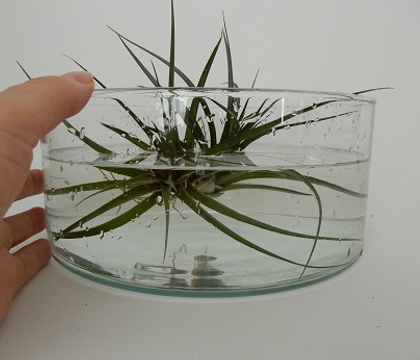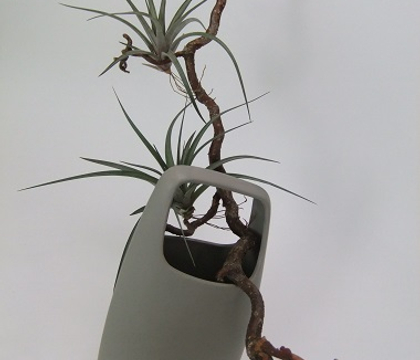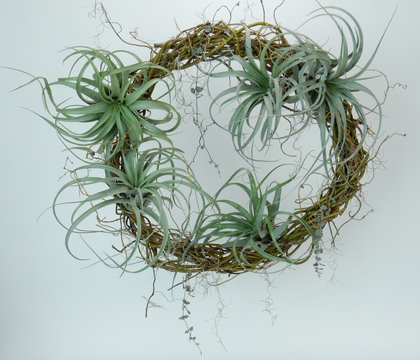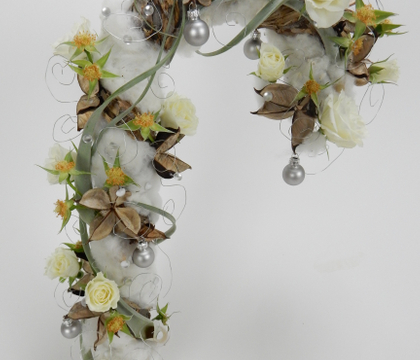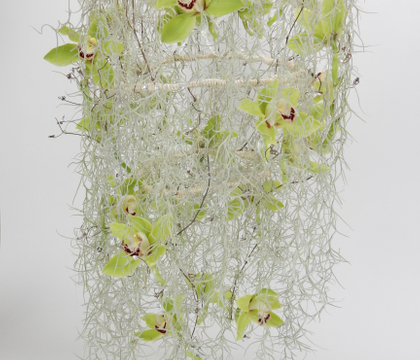Christine de Beer - effortless floral craftsman
Designing with Tillandsia
- 9 July 2014
- click to send Christine a smile
For a more detailed look at taking care of and conditioning air plants see the Tutorial below
When you design with air plants it is best to keep their growing conditions in mind.
Air plants are epithytes, meaning they grow in the air, on a tree, host or object. They do not require this host for nutrients only using it as a comfortable place to settle.
Do not set the plant in water. Make sure that, if you mount the plant on something that it will not retain a pool of water and that any water will naturally drain away to prevent fatal rot
Do not design in planted containers with the the air plant roots in soil.
Rinse ocean driftwood to remove any possible salt build up that can damage the plant before designing
If you purchase wood for your design make sure it was not treated with a copper solution. This is usually added to wood to prevent it from rotting but it is toxic to the air plants.
Do not design in floral foam. If you insert an air plant in a foam design peg it to hover above the foam.
If you are using the air plant in a show or competition design be aware of the artificial lighting can be too harsh for the plant and leave blemishes and this type of lighting will also negatively effect the growth of the plant.
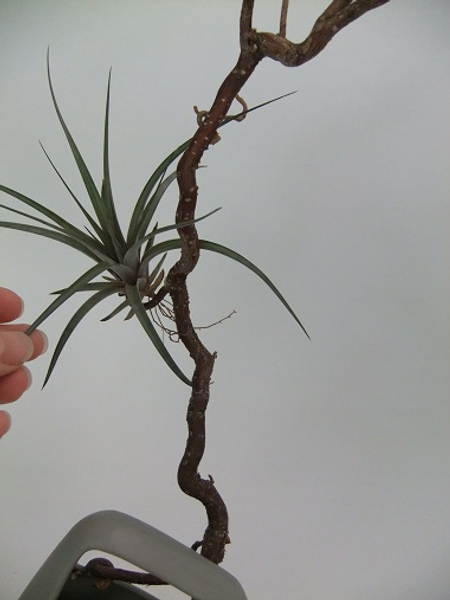
Air plants require good air circulation. The ideal conditions would be if fresh air freely moves around the plant
If you design with the air plant in a closed container (such as a terrarium or globe) you will need to remove the plant to water. Make sure you set it out to dry and get air after you soak it (once or twice a week) for at least four hours. Protect the plant from magnified sunlight. You can occasionally mist the plant with water, but take care not to over mist.
The air plants can be easily trimmed to size. Cut or peel away any brown leaves. You can also cut away the roots, if required. Trim any leaves at a sharp angle to mimic it's natural shape. The air plant roots are more for anchoring the plant to the host than what it is for nutrient uptake. These roots will eventually re-grow
I prefer to use the roots to keep my air plants in place. This also creates a slightly different design every few days after I soaked and replaced my plants in a slightly different way. If you need to fix the air plant more permanently to the host (especially if the entire design can be soaked as a unit) it is best to staple the roots, tie the plant with fishing line or wire, use a non - water soluble glue- avoid covering the entire base of the bottom of the plant where the roots grow. If you keep the plant in that design position for some length of time the roots will grow to adhere itself into position.
Sign up for my weekly newsletter
Every week I add a new design with related tutorials. Be sure to subscribe to receive an email notification with design inspiration.
Tutorials
How to condition Orchids to use as plants in an arrangement without placing the roots in a growth medium
Favourite Flowers
Air plants
